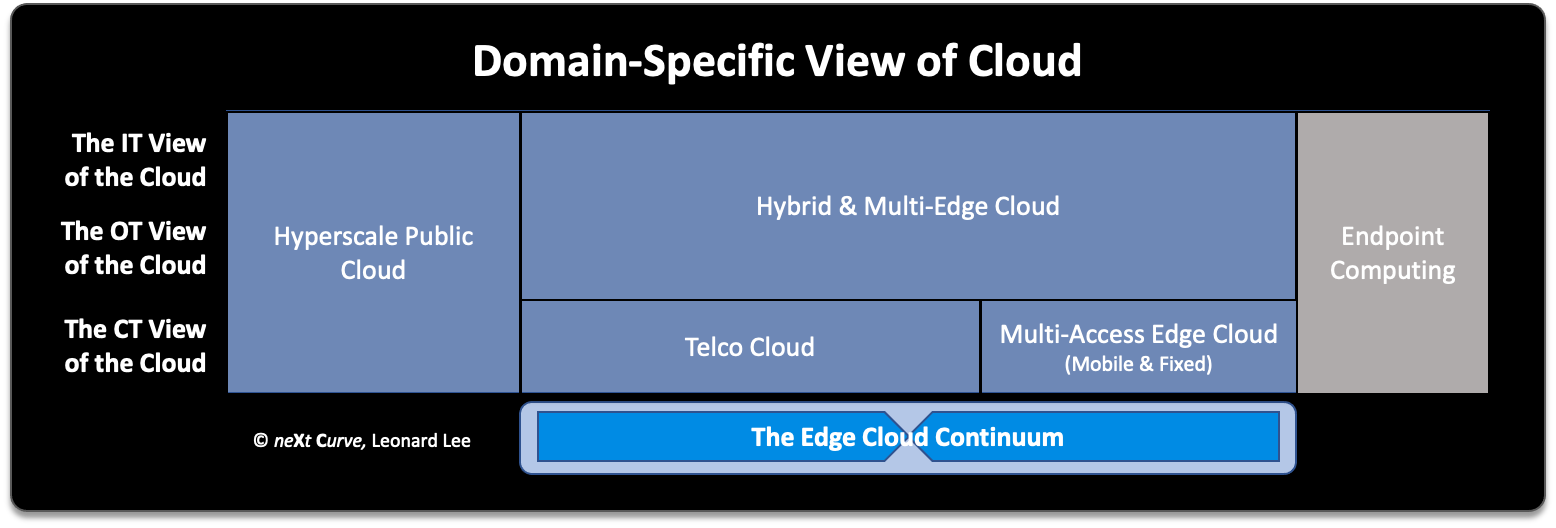We have talked about how the edge has and is continuing to become more “cloudified”. Every day, we see multiple press releases from a slew of startups as well as the leading cloud service providers that lend proof to the notion that cloud technologies and service delivery models are making their way across the edge. In this article, I will touch on how the edge cloud is shaping the future of computing.
The Ubiquity of Computing
In many ways, the edge cloud is an important next step in the evolution of ubiquitous computing. What is ubiquitous computing or what is also known as ambient or pervasive computing? It is the idea that computing will be available everywhere and our interface with applications and services will become increasingly invisible to us.
Edge cloud moves us closer to the vision of ubiquitous computing by fostering new possibilities in how we can distribute computing and design distributed system. None of this can happen without the infrastructure which is what the edge cloud provides or will provide. I want to emphasize that we are truly in early days, but the edge cloud is what we will be pondering and what innovators in the ICT industry whether they are a service provider, developer, ISV, OEM, or semiconductor company will be pressing.
The convergence of mobile computing (advanced endpoint compute and mobile wireless connectivity) and cloud computing (software/platform architectures, technologies, and service delivery models) is allowing us to disaggregate and distribute systems that we couldn’t in ways that we couldn’t in the past architecturally and physically. The emerging edge cloud makes it possible to place disaggregated and distributed application workloads and data literally anywhere and anyway we want. This means a new level of architectural flexibility that central cloud computing does not provide today.
Regarding ubiquity, it is important to recognize the importance of wireless connectivity Increasingly capable mobile and fixed wireless networks, and some exciting developments in satellite communications are extending where we can deploy. These advancements in connectivity will change how we can architect distributed edge computing systems globally and out into space by changing the economics of connecting nowhere, or at least what used to be nowhere.
Next time some tells you that 5G is no big deal tell them it really is the foundation for the next frontier of computing.
The Edge Cloud Continuum
 The implications of ubiquitous computing are profound, especially on the prevailing cloud computing trend. It will fundamentally change the way we need to think about computing and compute infrastructure. Inevitably we will change our thinking due to what is a pendulum swing toward the middle ground between centralized computing exemplified by our conventional notion of cloud computing and localized on-device computing (endpoint computing). Yes, this middle ground is edge computing. It is deep and vast. I think of it as an edge cloud continuum of many degrees and many forms.
The implications of ubiquitous computing are profound, especially on the prevailing cloud computing trend. It will fundamentally change the way we need to think about computing and compute infrastructure. Inevitably we will change our thinking due to what is a pendulum swing toward the middle ground between centralized computing exemplified by our conventional notion of cloud computing and localized on-device computing (endpoint computing). Yes, this middle ground is edge computing. It is deep and vast. I think of it as an edge cloud continuum of many degrees and many forms.
Consider for the moment that the cloud computing model of today, which is a convoluted mixed bag of commoditized managed IT services (IaaS), software delivered as services (SaaS), and development platforms (PaaS), largely assumes a centralized computing model that strives to subordinate endpoint computing. After all, for the past decade it’s all about putting everything in the cloud, hasn’t it? For the most part, the UI of SaaS applications is the browser, which is a rather thin client.
Yet, the hyperscale cloud service providers such as AWS, Microsoft, and Google see the writing on the wall. They are upping their edge cloud game with a bevy of consumer and industrial IoT offerings that extend their cloud platforms across the edge under the guise of hybrid cloud. Each one of these cloud behemoths continues to invest in building out their edge cloud footprint with some extending out onto endpoints such as a car or embedded IoT device. We are seeing a similar dynamic happening with telecommunications operators who are pursuing a similar mission with the network with their telco cloud and MEC (Multi-Access Edge Computing) cloud endeavors.
It’s not good enough to be a traditional cloud service provider focused on centralizing computing. Why? The primary reason is undoubtedly the reality that most data and content are generated and consumed at the edge by endpoint devices. To make matters more challenging for (central) cloud purists, endpoints are getting more capable in every way thanks to rapid advancements in endpoint hardware, software, and semiconductor technologies.
The sobering reality for many in the cloud community is that everything is not going up to the central cloud. It’s best to make that mindset sooner than later as the gravity of compute centers toward the middle.
The Era of X-Tier Computing Architectures
 Consequently, as the focus of computing moves toward the “edge”, we find ourselves looking at a future of X-tier architectures in which the disaggregation and the distributed placement of application logic and network workloads and data can happen anywhere along the continuum from the central cloud to the endpoints.
Consequently, as the focus of computing moves toward the “edge”, we find ourselves looking at a future of X-tier architectures in which the disaggregation and the distributed placement of application logic and network workloads and data can happen anywhere along the continuum from the central cloud to the endpoints.
If we consider hybrid edge clouds that are a blend of public and private edge nodes, we will undoubtedly see federated and shared cloud computing models emerge across the edge cloud continuum. We will be able to dynamically place high-performance and low-latency as close to the default location where it makes the most economical sense while meeting the service level requirements of an application.
We can expect to see novel new business models emerge that support multi-edge cloud brokering services, neutral host cloud infrastructure providers, and computing exchanges that support edge cloud intermediaries that provide developers with a multitude of new options for deploying their distributed edge applications across a ubiquitous computing fabric. While the aspirational state I describe is a way off in the future, much of this is already in play at a low but rapidly progressing level of maturity.
The crazy thing is edge cloud economics will be constantly changing for the better. For this reason, the ability to rearchitect and redeploy your edge computing applications to take advantage of new and the constantly improving economics of the edge cloud will change the way we think of cloud computing. Developers and architects will have their work cut out for them to financially optimize their applications.
Cloud-native (container-based or serverless) applications that are based on microservices architectures will ideally be able to take advantage of the best economics of a dynamic edge cloud. The architectural and economic flexibility of the edge cloud will inevitably be a huge boon for enterprises that are looking to pioneer the next frontier of automation and autonomous systems for their business bring about what I call the autonomous enterprise. After all, business automation happens at the edge.






